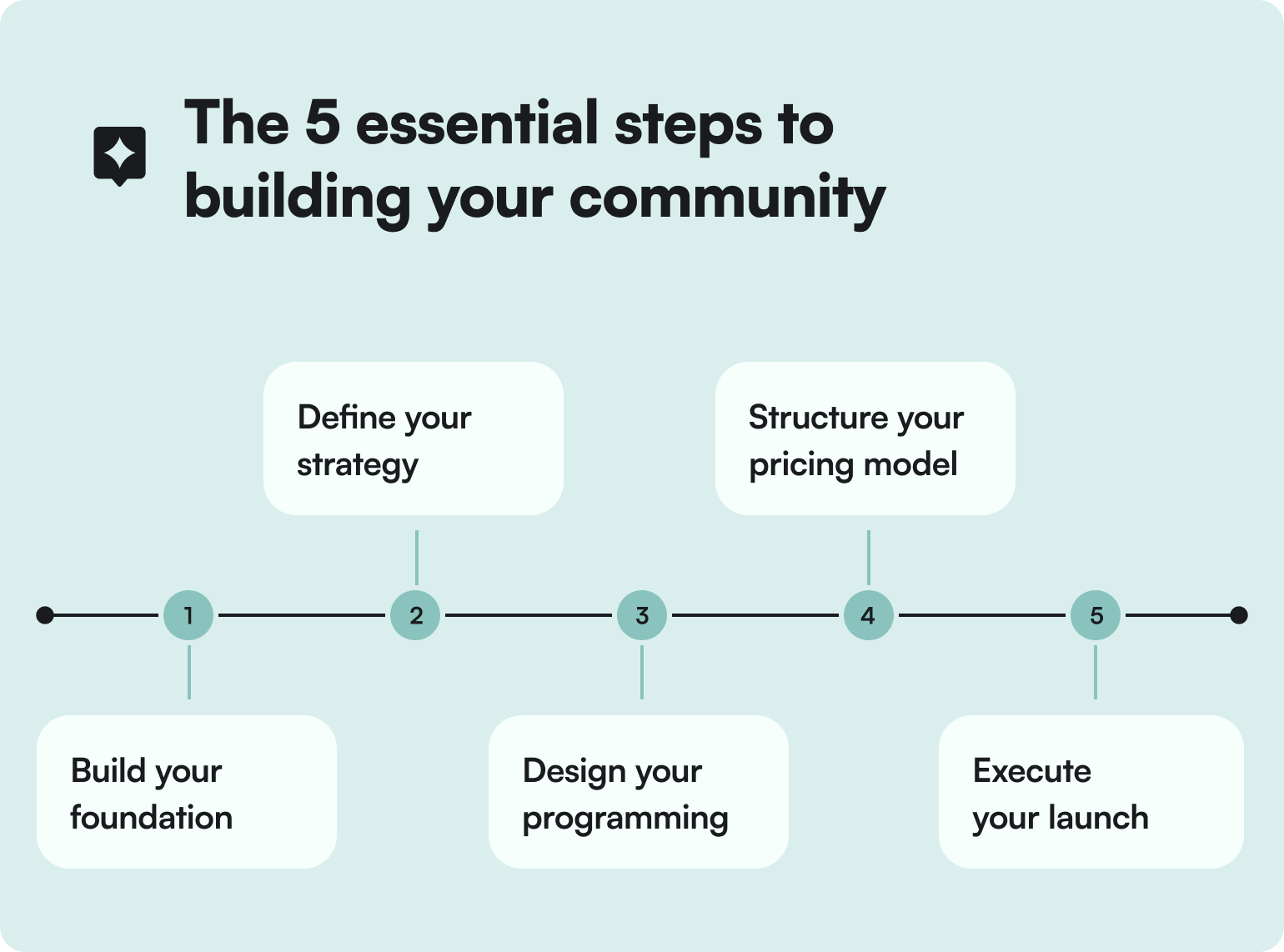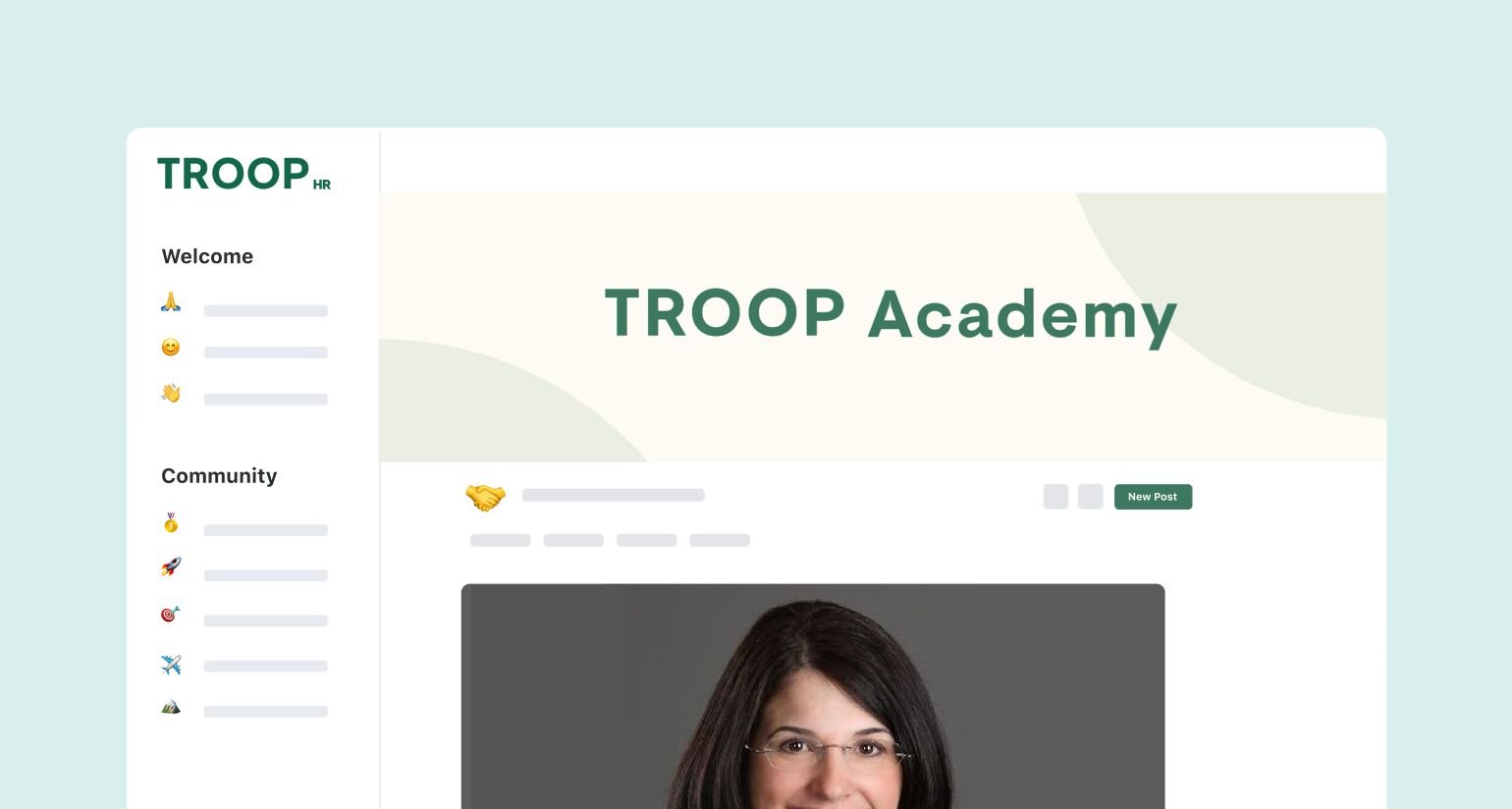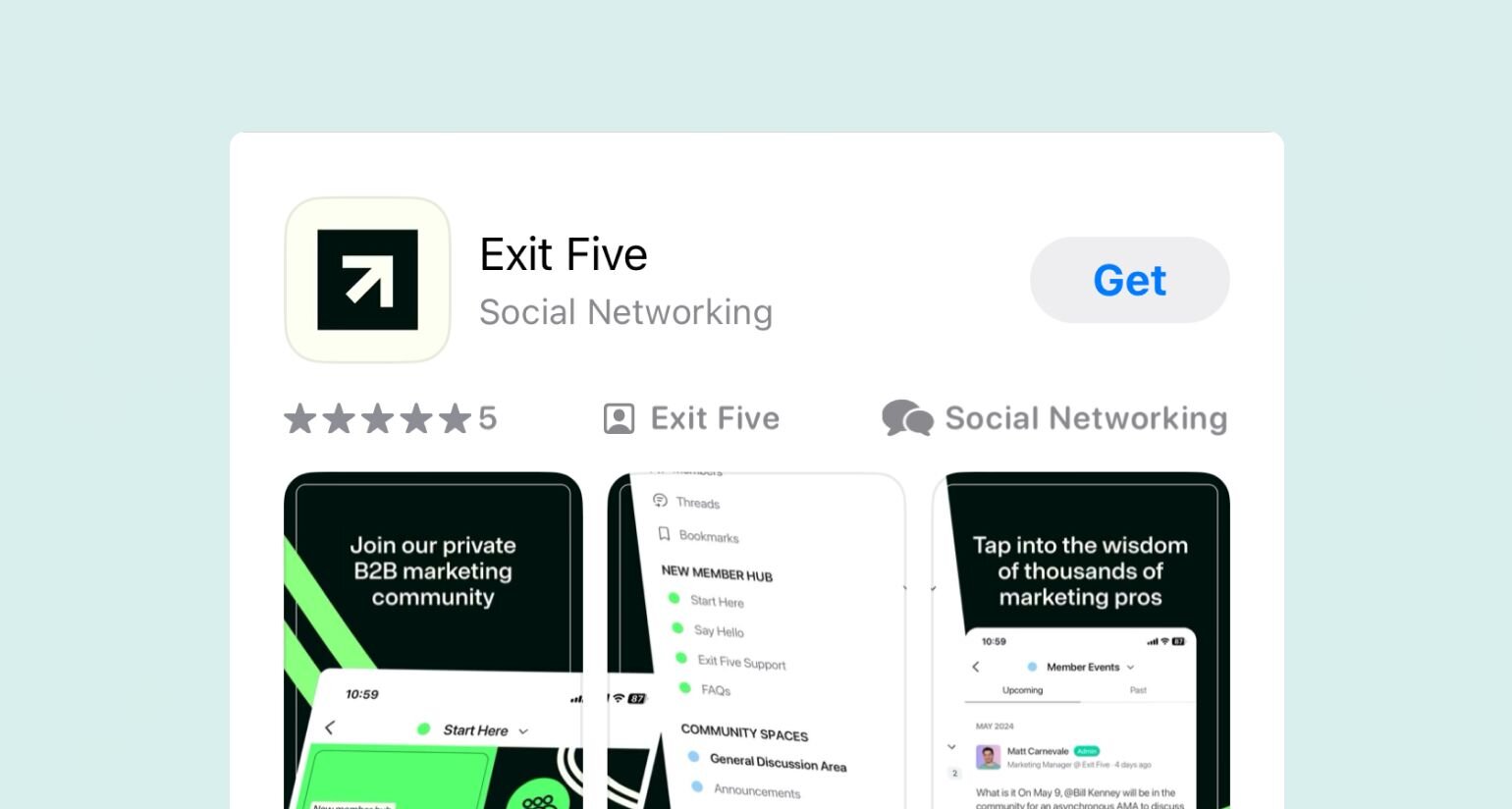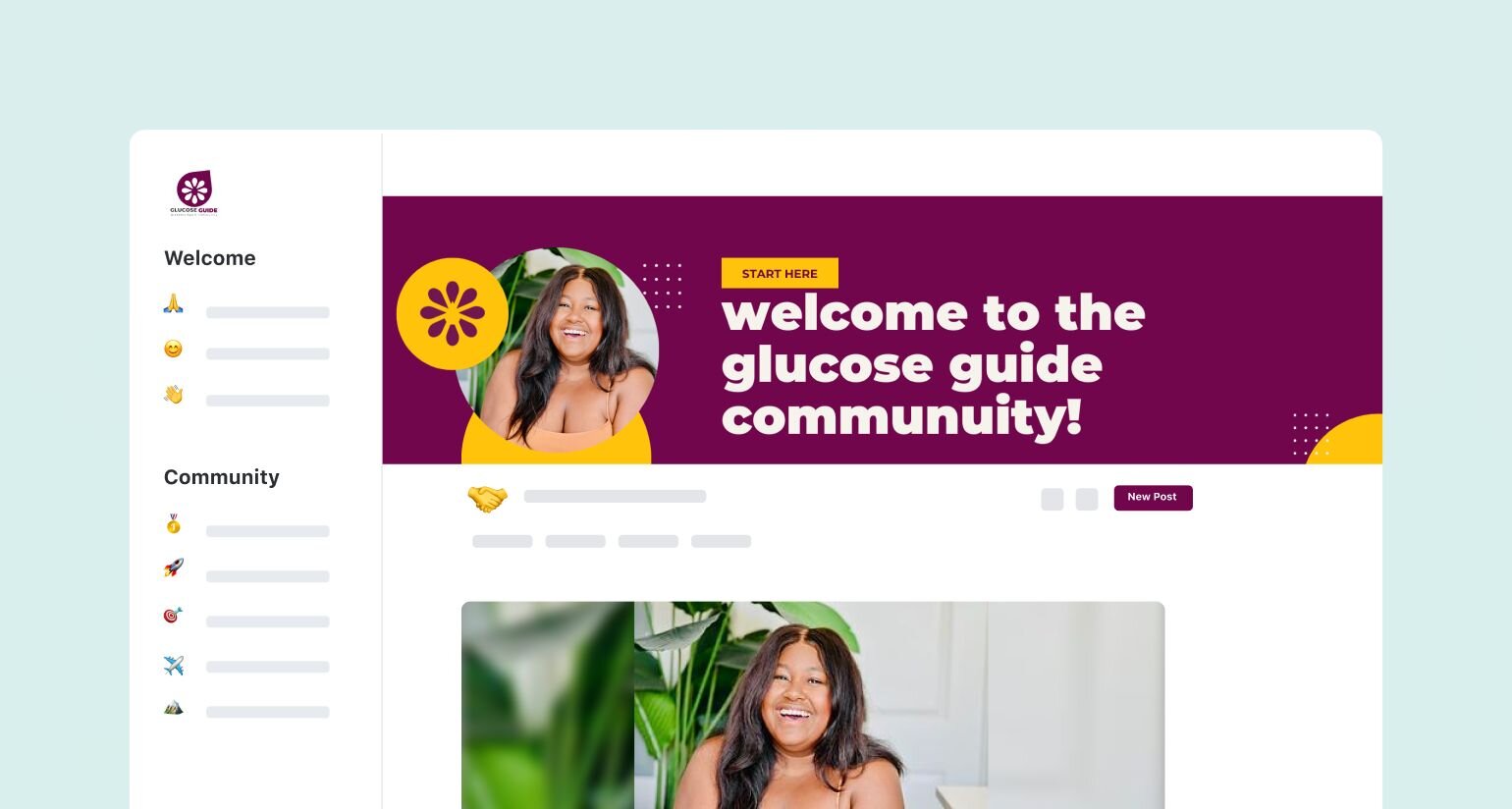The complete, step-by-step guide to build a thriving community in 2025
Picture this:
- ✍️A group of passionate journalers meeting weekly to find their creative voice together.
- 🌃Product designers sharing late-night breakthrough moments with peers (instead of waking up their partners).
- 🧑⚕️Healthcare professionals supporting each other through career transitions.
These aren't just random gatherings—they're real, thriving communities that grow individual aspirations into collective transformations.
But here's the thing: Building a community isn't just about bringing people together.
It's about creating an environment where members experience genuine transformation, whether that's mastering a new skill, shifting their mindset, making new connections and friends, or reaching professional goals they once thought impossible.
In 2025, businesses and creators need communities more than ever. Why? Because in our hyper-connected yet oddly isolated world, people crave authentic connection and shared growth. A well-built–and nurtured–community can:
- Transform customer relationships into lasting partnerships
- Generate consistent revenue through memberships or programs
- Create powerful networks that drive real business value
- Position you as a thought leader in your space
- Build a sustainable, scalable business model
Through our work with over 13,000 community builders, we've identified the essential elements that separate thriving communities from those that struggle to find their footing. In this preview of our comprehensive community builder’s guide, you'll learn the foundations of:
- How to define your community's purpose and value proposition
- Steps to identify and attract your ideal members
- Proven frameworks for community programming and engagement
- Strategies to price and monetize your community
- A detailed roadmap for launching with confidence
Whether you're a creator looking to monetize your audience, a coach wanting to scale your impact, or a business aiming to deepen customer relationships, our goal is to walk you through every step of building a community that doesn't just gather people—it transforms them.
So, let’s not waste time.
What does community building look like in 2025?
The community landscape has transformed dramatically since the global shift to digital-first connection post-COVID.
While massive, general-interest groups (see: social media) once dominated, 2025's most successful communities are built around focused niches with concrete value delivery–whether that's skill development, professional networking, or specific transformations in people’s phases of life (career, family, health, etc).
We're seeing recommendations from micro-communities become as trustworthy as personal ones. The technology has evolved too, with AI-enhanced engagement tools and comprehensive platforms making it easier than ever to launch and scale a community.
(Ahem.)
Members' expectations have matured alongside these changes. They now look for
- Smaller, more intimate communities with micro-learning moments that don’t overwhelm
- Multi-modal engagement (from text to video) that supports different types of people
- Async-first communication that respects varied schedules, and
- Peer-led programming that positions community leaders as facilitators rather than sole knowledge providers.
While this raises the bar for quality, it also creates an unprecedented opportunity for new community builders who can craft focused, value-driven spaces that members are genuinely excited to be part of.
What makes a successful community?
At its core, community building is the art of creating spaces where people connect, grow, and transform together. But what separates thriving communities from those that fizzle out? Let's break down the essential elements.
Core elements of successful communities
Every thriving community shares four fundamental pillars:
- Clear purpose and vision: Your community needs a compelling "why" that resonates with members and guides every decision you make. Whether it's helping freelancers land better clients or supporting new parents, this purpose becomes your north star.
- Defined value proposition: Members should understand exactly what they'll gain from participating. This could be skill development, networking opportunities, or emotional support—but it must be crystal clear.
- Engaged member base: Success isn't about size—it's about engagement. A small group of active, passionate members creates more value than thousands of passive participants.
- Sustainable business model: Whether through memberships, courses, or other revenue streams, your community needs a viable way to support itself and grow.
Types of communities that work in 2025
Different business goals require different community models. Here are the most successful formats we're seeing:
Paid membership communities: Perfect for creators and experts who want to build recurring revenue while delivering ongoing value. Members pay monthly or annually for access to exclusive content, events, and connections.
Cohort-based communities: Ideal for educational experiences where members progress together through a structured program. Think writing workshops or business accelerators.
Product-centric communities: Built around existing products or services, these communities enhance the customer experience and increase retention. Tech companies often use this model effectively.
Learning communities: Focused on skill development and knowledge sharing, these communities combine educational content with peer support.
Support communities: Centered around shared challenges or experiences, these communities provide emotional support and practical advice via coaching, courses, and participation.
The 5 essential steps to building your community

Step 1: Build your foundation
Before you create your first community space, you need to lay groundwork that will support sustainable growth:
- Define your community's purpose by identifying the transformation you'll help members achieve
- Create a value proposition that clearly communicates your community's benefits
- Understand how your community integrates with your existing business
- Set realistic time commitments you can maintain long-term
Step 2: Define your strategy
Success comes from being intentional about who you serve and how you serve them:
- Create detailed member personas that capture your ideal participants
- Map out specific pain points your community will solve
- Choose the community business model that best fits your goals
- Establish clear guidelines that foster the right culture
Step 3: Design your programming
Your community's programming creates the structure members need to achieve their goals:
Your core value pillars are a way to build an event and programming strategy around the ways you want to show up and offer value to your community:
- Help: Q&A spaces, expert sessions
- Action: Challenges, accountability systems
- Learning: Resource libraries, workshops
- Connection: Networking events, peer matching
Creating signature experiences like hot seats, workshops, or accountability groups helps keep members engaged and achieving results.
Step 4: Structure your pricing model
Turn your community into a sustainable business:
- Choose between subscription, pay-per-access, or hybrid pricing
- Set clear revenue goals that support your business
- Develop an offer funnel that converts and retains members
- Create multiple revenue streams through additional products or services
Step 5: Execute your launch
Start small and scale thoughtfully:
- Begin with an alpha test (10-20 members)
- Move to beta launch with founding members
- Open to the public with refined offerings
- Grow through member advocacy
Best practices for community building
Success leaves clues–and those clues are thriving communities who can’t process membership applications fast enough.
Here are the practices we've seen work consistently across thousands of communities:
Start small and focused
- Begin with 10-20 highly engaged members
- Focus on quality interactions over member count
- Let your founding members help shape the community
Prioritize member experience
- Create clear onboarding processes
- Design engagement rituals that members look forward to
- Build connections between members, not just with you
- Foster meaningful conversations through thoughtful prompts
- Pick tools for your community tech stack that simplify your (and your members) lives
Gather and use feedback
- Regularly collect member input through surveys and discussions
- Iterate based on what's working (and what isn't)
- Stay transparent about changes and developments
- Empower members to contribute to the community's evolution
5 Common community-building mistakes
Learn from others' experiences and sidestep these typical pitfalls:
⛔️ Mistake #1: Trying to serve everyone
Instead: Define your niche and serve them exceptionally well
⛔️ Mistake #2: Overwhelming members with content
Instead: Focus on quality interactions and meaningful engagement
⛔️ Mistake #3: Neglecting community guidelines
Instead: Create and enforce clear standards from day one
⛔️ Mistake #4: Starting too big too fast
Instead: Begin with a core group and scale gradually
⛔️ Mistake #5: Undervaluing your offering
Instead: Price based on the transformation you provide
“Finding the right signature gathering for your community isn’t an overnight process. No one gets it right the first time, so don’t be afraid to tweak things along the way. The key is to stay flexible and keep refining until you discover what truly resonates with your members.”
- Mathilde Leo, Head of Community and Customer Education at Circle
Real-world community success stories
Let's look at how successful communities put these principles into action:
TroopHR has a crystal-clear persona for their membership–and a solid understanding of their ideal member’s wants and needs. They focus on gathering like-minded HR professionals for professional development, upskilling, and networking–and it’s wildly successful.

Exit Five transformed from a gated marketing newsletter into a thriving community by realizing that the power of having people’s attention is connecting them to each other. By focusing on consistent value delivery, member connections, and sharing out member success stories, they were able to 10x growth in community value after moving to Circle.

Glucose Guide took a different approach with their pay-what-you-can diabetes support community. By making her community accessible while maintaining quality, Mila has built a sustainable model that serves over 1,000 members–which she manages all by herself.

Start building your community strategy today
Ready to build your community? Here's your action plan:
- Download the community builder's workbook
- Read through the guide
- Fill out the workbook as you read
- Complete the foundation exercises
- Define your ideal members
- Choose your community model
- Plan your programming
- Set your launch date
Building a community isn't just about following a blueprint—it's about creating a space where people feel genuinely connected and supported in achieving their goals. While the journey requires dedication, the impact you can have on members' lives makes it incredibly rewarding.
Ready to start building your community? Take the first step toward creating something remarkable (and get a treasure trove of community-building resources) in our community builder's guide.
Remember: Every thriving community started with a single step. Take yours today.